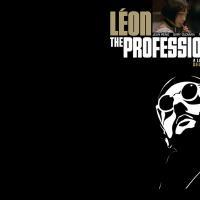
How Pros Play Theoretical Endgames
To play endgames well one has to know how to use general strategies of endgame play such as positioning the king actively, creating passed pawns, placing rooks behind passed pawns etc. However, this is not enough as there are theoretical positions (specific positions with specific sequences of correct moves) that one has to know too. What is the number of theoretical positions that one has to know? – I would say not many- maybe 20-30 or a number close to that. It is interesting to know that many ideas repeat themselves, so learning one theoretical position can automatically let you know 5 others associated with that one. We will check the familiarity of top players with theoretical endgame positions by looking at the endgames from the World Cup that feature theoretical positions.
The first endgame is not exactly a theoretical one, however to figure it out you need to know the following theoretical position. The idea is that the knight cannot win a tempo by itself; while a bishop or other piece can do it easily a knight is handicapped in that way.
Ponomariov knew about this endgame and maneuvered for quite some time to reach the following position. He does not to capture the bishop right away and can wait for the optimum knight placement or for the opponent’s mistake as happened in the game.
So how much of the theory do we need to know here? I would say it is enough to know the theoretical position presented above and the rest one can figure out at the board as Ponomariov did. What if you didn’t know the theoretical position and had this endgame? There is a high chance that by thinking at the board you'd find the final position on diagram 1 is a win.
The next example is Ivanchuk defending the B. vs. R. endgame against Radjabov. The endgame is theoretically drawn, however it can get tricky. The R. vs. N. is the easiest to defend, whereas in the R. vs. B. endgame the defending side needs to know a few ideas. The most important idea is to lead the king to the corner with the opposite color of his bishop’s. The reason for that is that the bishop can shield the king from checks when it is in the corner, and the king can not be zugzwanged into undefending the bishop because it would be stalemate. Another useful idea to know is to keep your bishop as far as possible from the opponent’s king. The game is a good illustration of this idea.
What would happen if one doesn’t know which corner to lead the king into? There is a good chance that the king would end up in the “wrong” corner and the game would be not easy to hold. But you don’t need any more information about this endgame as it is easy to figure it out at the board.
The next endgame I was glad to see as I recently covered the theory of R+B. vs. R here and here. In this endgame you have to know more theoretical positions than in most other endgames. There are Phillidor’s, Cochrane, Shen and Lolly positions that one has to know. If Dominguez knew that after Rg4 he gets into Phillidor’s theoretically lost position he might have tried to find a better move and he had 2 moves that could have held the game.
My suspicion is that Polgar did not remember the Re5 idea followed by Be4 and had to find an alternative route, which was successful too. She clearly was familiar with the ideas of the position as there was not a moment when he could have equalized after they reached the Philidor’s position. There is a good chance that she would come up with the Re5 idea if needed – for a 2700-level player it is feasible. However, for masters and lower-rated players one absolutely has to know at least how to win Philidor’s position.
The last endgame presented here is the hardest one because the theory is highly convoluted. Let us look-up what Dvoretsky has to say about R. vs. R+ f and h pawns in his Endgame Manual: “Endings with these pawns are mostly drawn. Their theory is rather complicated and that is why we will explain only the basic ideas here”. It looks like we are lucky here and do not need to know any theoretical position just general ideas. Here, I will list a few ideas:
The defending side should place the king in front of the more advanced pawn.
The best location for the white rook in our example is a8 – from there it can give side and back- rank checks.
If the king is cut along the last-rank the position is usually lost.
The endgame is extremely hard to defend. Is it worth investing time to study theoretical positions in it? Probably not, however one should know the basic ideas of cutting-off the king along the 2nd rank and along the g-file, keeping the rook behind the pawns, knowing when to keep it on the g-file and when Rg2 is a threat so one must move it to the f-file (behind the most advanced pawn).
Today we saw how top players play theoretical positions. The conclusion is that although some of them having advantage did not know exact wins most of them knew the right ideas and played them well. The defending sides, especially in the last two examples could have some use of theory. Out of the hours you put into endgame study ¼ should be dedicated to learning new theoretical positions. Next week we will return to the series on working on endgame mistakes.






